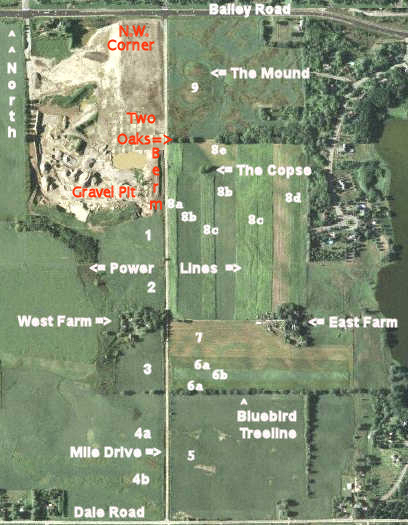
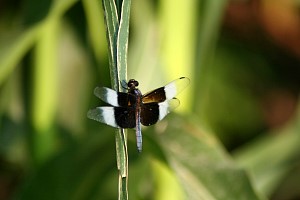
|
|
Widow Skimmer Dragonfly (Libellula luctuosa Burmeister)
The widow skimmer is famous for its pruinosity - the white, waxy coating on the
dragonfly's wings and abdomen.
Dragonflies fly backwards then change direction in just one body length of air space. They can glide,
hover in midair, and make sharp turns. Some can fly up to 35 miles per hour.
Dragonflies are insects.
Dragonflies live in and near ponds, streams, and lakes. Of 5,500 species of dragonflies worldwide, 86 are known to live in Minnesota.
A dragonfly's life begins as an egg laid underwater.The egg hatches into a nymph. The nymph eats tadpoles and minnows. The growing nymph molts its exoskeleton, just as a snake sheds its skin. The nymph crawls out of the water onto a plant, rock, or log and molts one last time. Its abdomen inflates and blood flows into its wings, which slowly unfold, dry, and stiffen. This transformation from egg to adult is called metamorphosis. These creatures may live as nymphs for two years.
|
|
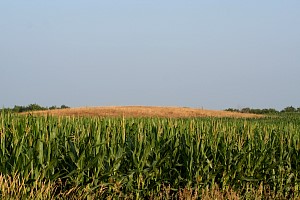
The hot dry weather continues. Here you can see The Mound in field #9 has
completely dried out, killing anything growing on it. There is a working
gravel pit up the road. This mound is another natural deposit of
sand and gravel located along Mile Drive that easily dries out.
Over time farmers have learned not to plant cash crops on it.
|
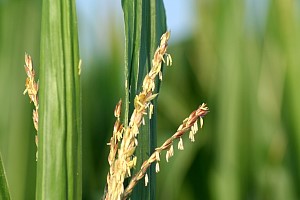
Corn (Zea mays) is a member of the grass family. Some grasses can grow wild but corn can't. It needs to be planted in rows so that the stalks can cross-pollinate each other. If they don't pollinate each other, there won't be any ears of corn.
Enlarge the picture with The Mound in the background (above) and you can see the
yellow-tan corn tassels rising at the apex of the plants.
The pollen bearing tassels are usually fully emerged and stretched out before any pollen is shed. Pollen shed begins at the middle of the central spike of the tassel and spreads out later over the whole tassel with the lower branches last to shed pollen.
Pollen grains are borne in anthers (they look like rice grains), each of which contains a large number of pollen grains. The anthers open and the pollen grains pour out in early to mid morning after dew has dried off the tassels. Pollen is light and is often carried considerable distances by the wind. However, most of it settles within 20 to 50 feet.
|
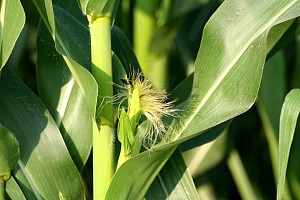
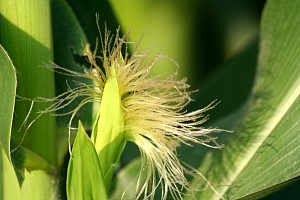
Pollen shed usually begins two to three days prior to silk emergence and continues for five to eight days with peak shed on the third day.
Buds started to grow on the cornstalk where the lower leaves and the stalk met. A cob forms from
the bud with
corn silk sticking out of the far end.
Corn silks are covered with fine, sticky hairs which serve to catch and anchor pollen grains.
The pollen grain starts growth of the pollen tube down the silk channel within minutes of coming in contact with a silk and the pollen tube grows the length of the silk and enters the female flower (ovule) in 12 to 28 hours.
A well developed ear shoot should have 750 to 1,000 ovules (potential kernels) each producing a silk. The silks from near the base of the ear emerge first and those from the tip appear last. Under good conditions, all silks will emerge and be ready for pollination within 3 to 5 days and this usually provides adequate time for all silks to be pollinated before pollen shed ceases.
Pollen of a given plant rarely fertilizes the silks of the same plant. Under field conditions 97% or more of the kernels produced by each plant are pollinated by other plants in the field.
The amount of pollen is rarely a cause of poor kernel production. Each tassel contains from 2 to 5 million pollen grains which translates to 2,000 to 5,000 pollen grains produced for each silk of the ear shoot. Shortages of pollen are usually only a problem under conditions of extreme heat and drought. Poor kernel production is more often associated with poor timing of pollen shed with silk emergence (silks emerging after pollen shed).
|
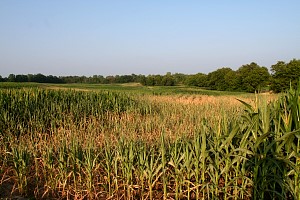
The heat stress is so severe brown, stunted corn is evident in this picture of
corn in Field #9.
|
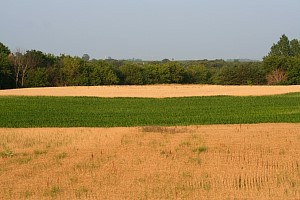
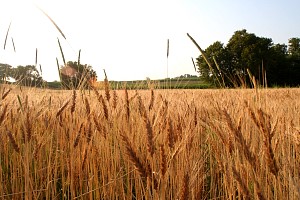
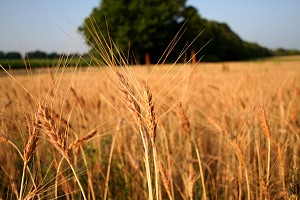 The crop in Field #8 in the distance (top, leftmost) is Winter wheat.
Winter wheat is a cereal. In the northern hemisphere, winter wheats are planted in the fall,
from September through December. Winter wheat sprouts before freezing occurs, then becomes dormant until the soil warms up in the spring. Persistent snow cover might be disadvantageous; however, winter wheat needs a few weeks of cold before being able to flower. The wheat grows and matures until ready to be harvested by early July.
Green corn is in the middle ground, and sixteen-row barley is in the foreground. The other
two picture (above, middle and above, rightmost) are close up of the barley.
Return to Consumables
The crop in Field #8 in the distance (top, leftmost) is Winter wheat.
Winter wheat is a cereal. In the northern hemisphere, winter wheats are planted in the fall,
from September through December. Winter wheat sprouts before freezing occurs, then becomes dormant until the soil warms up in the spring. Persistent snow cover might be disadvantageous; however, winter wheat needs a few weeks of cold before being able to flower. The wheat grows and matures until ready to be harvested by early July.
Green corn is in the middle ground, and sixteen-row barley is in the foreground. The other
two picture (above, middle and above, rightmost) are close up of the barley.
Return to Consumables
|
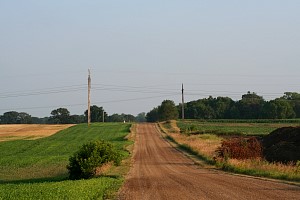
Heading south on the road approaching the rise where the driveways to the East farm and
the West farm are. The crops are (left to right on the left side of the road) the
close-cropped hayfield then sedan grass then (right side of the road) soybeans.
|
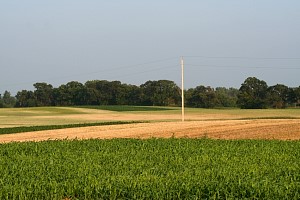
Looking across Fields #8 #7 and #6 toward Bluebird Treeline. Note the crop stress
caused by the heat and lack of rain.
|
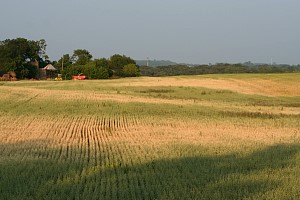
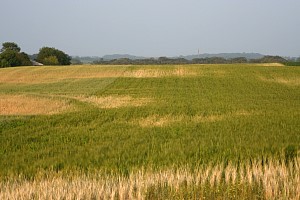
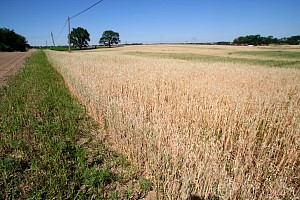 Looking east the oats in Field #7. Above, rightmost shows the oats next to the road
are prematurely brown.
Looking east the oats in Field #7. Above, rightmost shows the oats next to the road
are prematurely brown.
|
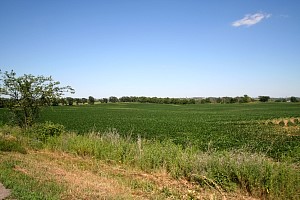
We've had a bit of rain, and that has perked up the soybeans in Field #5.
|
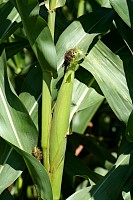
The ears of corn are filling out.
|